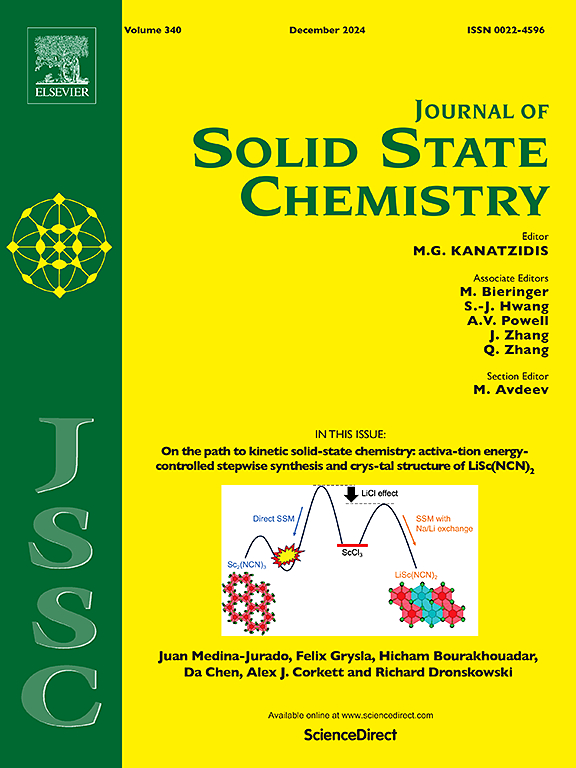Phenazine-functionalized Zn-based metal organic framework for efficient visible light photocatalytic sulfides
IF 3.5
3区 化学
Q2 CHEMISTRY, INORGANIC & NUCLEAR
引用次数: 0
Abstract
Herein, we successfully obtained a three-dimensional (3D) metal-organic framework (MOF) with [Zn2(PDPA) (DMF)3]n (Zn-MOF) by using 5,5'-(phenazine-5,10-diyl)diisophthalic acid (H4PDPA) and Zn(NO3)2·6H2O. Zn-MOF has ZnO6 and ZnO5 units that are bridged by PDPA4− ligands. ZnO5 core was connected by the COO− groups of the PDPA4− ligands, which unsaturated coordination site provided an available coordination point for the activation and oxidation of substrate molecules. And ZnO6 core was connected by the COO− groups of the PDPA4− ligands and oxygen atoms from coordinated N,N-dimethylformamide (DMF) molecules. Zn-MOF possessed a broad light absorption range and showed significant photoelectric conversion properties under visible light irradiation. Therefore, when Zn-MOF are employed for photocatalytic oxidation of sulfides, they can oxidize anisole sulfide to sulfoxide products within a short period of time under visible light, demonstrating high photocatalytic oxidation efficiency. The unique structural features and photoelectric properties of Zn-MOF make it a promising candidate for efficient photocatalytic applications, particularly in the oxidation of sulfides under visible light.

苯那嗪功能化锌基金属有机骨架高效可见光催化硫化物
本文以5,5′-(非那嗪-5,10-二基)二对苯二甲酸(H4PDPA)和Zn(NO3)2·6H2O为原料,成功地获得了具有[Zn2(PDPA) (DMF)3]n (Zn-MOF)的三维(3D)金属有机骨架(MOF)。Zn-MOF具有由PDPA4 -配体桥接的ZnO6和ZnO5单元。PDPA4 -配体的COO -基团连接ZnO5核,其不饱和配位位点为底物分子的活化和氧化提供了一个可用的配位点。ZnO6核由PDPA4 -配体的COO -基团和配位的N,N-二甲基甲酰胺(DMF)分子中的氧原子连接。Zn-MOF具有较宽的光吸收范围,在可见光照射下表现出显著的光电转换性能。因此,当Zn-MOF用于硫化物的光催化氧化时,在可见光下,它们可以在短时间内将苯甲醚硫化物氧化为亚砜产物,表现出较高的光催化氧化效率。Zn-MOF独特的结构特征和光电性能使其成为高效光催化应用的有希望的候选者,特别是在可见光下硫化物的氧化。
本文章由计算机程序翻译,如有差异,请以英文原文为准。
求助全文
约1分钟内获得全文
求助全文
来源期刊

Journal of Solid State Chemistry
化学-无机化学与核化学
CiteScore
6.00
自引率
9.10%
发文量
848
审稿时长
25 days
期刊介绍:
Covering major developments in the field of solid state chemistry and related areas such as ceramics and amorphous materials, the Journal of Solid State Chemistry features studies of chemical, structural, thermodynamic, electronic, magnetic, and optical properties and processes in solids.
 求助内容:
求助内容: 应助结果提醒方式:
应助结果提醒方式:


